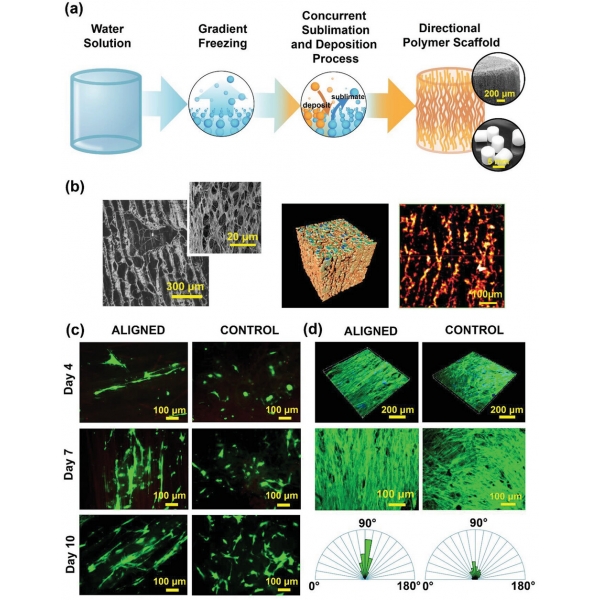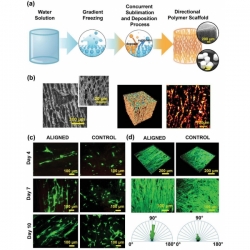Abstract
Dental caries, or tooth decay, is a widespread problem and is generally considered irreversible, yet a regeneration solution exists to cure them. In this study, a multifunctional and biocompatible dental scaffold is fabricated by a unique vapor sublimation and deposition polymerization process with the well-accepted material Parylene, resulting in the construction of a 3D and porous polymer scaffold that accommodates living cells and a combination of growth factor molecules in a single fabrication process, which differentiates the coating formation from a conventional vapor process. Physically, a directional interior structure is constructed to guide dental pulp stem cells (DPSCs) attachment and alignment. Biochemically, necessary growth factors, including Wnt-3a and FGF-2, are incorporated within the scaffold during fabrication to guide the cell differentiation of odontogenesis. The synergistic effects of the attachment and alignment of DPSCs, as well as the biocompatibility and odontogenic activities of the components accommodated in the scaffold, result in the upregulation of the cell differentiation into odontoblasts, as shown by the morphology of odontoblasts and the expressions of odontogenesis markers. Thus, the reported fabrication technique and its products represent an alternative approach for dentin regeneration in dental caries and tooth decay.
KEYWORDS: 3D Parylene, dental caries, dentin regeneration, structural polymer material, vapor sublimation and deposition.png)

